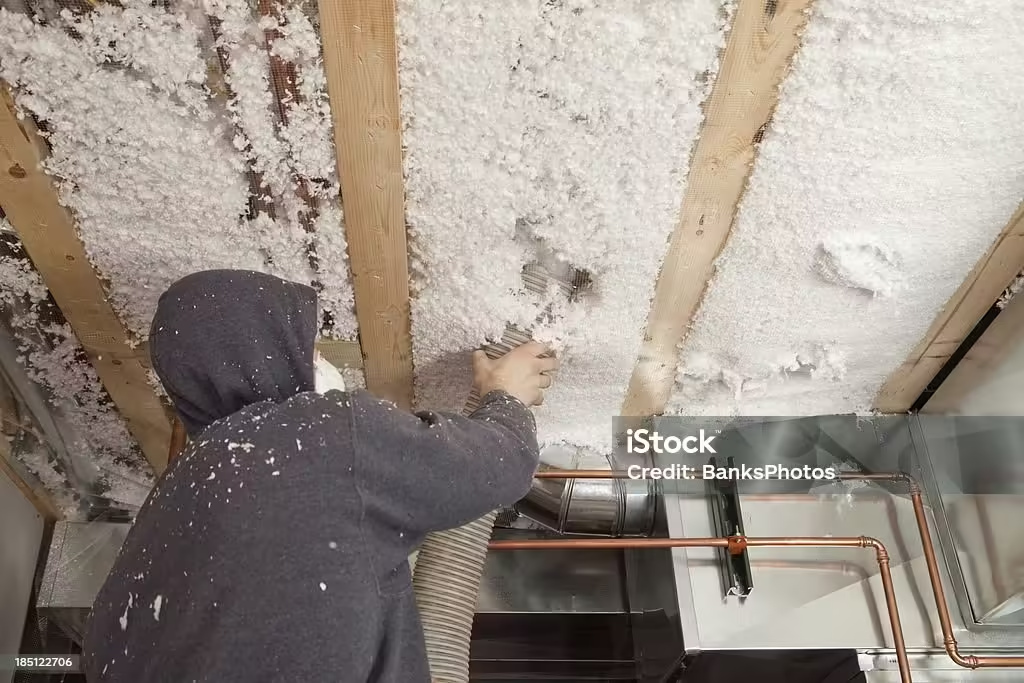How to soundproof a ceiling from noisy neighbours? 7 working Methods!

Dealing with noisy neighbors can be frustrating, especially when the noise seems to come straight through the ceiling. To Soundproof a ceiling in a effective way to reduce the noise and create a more peaceful living environment, here are some practical steps to help you soundproof a ceiling from noisy neighbors.
7 working Methods You Can Try!
1. Use Acoustic Panels
Acoustic panels are designed to absorb sound, making them an excellent option for soundproofing your ceiling. These panels are easy to install and can significantly reduce the amount of noise that travels through the ceiling. You can attach them directly to the ceiling or install them in a drop ceiling grid for added insulation.
2. Install a Drop Ceiling
A drop ceiling, also known as a suspended ceiling, can help create a barrier between your living space and the noise from above. By adding insulation between the original ceiling and the drop ceiling, you can further reduce the noise level. This method is particularly effective in apartments or condos where the original ceiling may not provide adequate soundproofing.
3. Add Mass Loaded Vinyl (MLV)
Mass Loaded Vinyl is a dense material that blocks sound waves, making it an ideal addition to your ceiling. You can install MLV directly onto the existing ceiling or between layers of drywall. The added weight of the MLV helps to prevent sound from passing through, creating a quieter living space.
4. Apply Acoustic Caulk
Acoustic caulk is a sound-dampening sealant that can be used to fill gaps and cracks in your ceiling. By sealing these gaps, you can prevent noise from traveling through small openings. Acoustic caulk remains flexible, so it won’t crack over time, ensuring long-lasting soundproofing.
5. Use Resilient Channels
Resilient channels are metal strips that are attached to the ceiling joists before adding drywall. These channels create a gap between the drywall and the ceiling, which helps to absorb and block sound waves. Installing resilient channels is a more involved process, but it can be highly effective in reducing noise.
6. Install a Soundproof Drywall
Soundproof drywall, also known as sound-dampening drywall, is designed to reduce noise transmission. This type of drywall is denser than regular drywall and is made with soundproofing materials like gypsum and viscoelastic compounds. Adding a layer of soundproof drywall to your ceiling can significantly decrease noise levels from your neighbors.
7. Consider Adding Insulation
Adding insulation to your ceiling is another effective way to reduce noise. Fiberglass or foam insulation can be placed between ceiling joists to absorb sound and prevent it from traveling through the ceiling. This method is especially useful if you’re planning to renovate or install a drop ceiling.
Tips to Soundproof a Ceiling from Noisy Neighbors
- Use Mass Loaded Vinyl: Installing mass-loaded vinyl (MLV) above your ceiling is an excellent way to block sound. MLV is dense and flexible, making it a perfect barrier against noise.
Try Resilient Channels: Resilient channels are metal strips that reduce sound transmission by creating a gap between the ceiling drywall and the ceiling structure. This helps in breaking the path of sound waves.
Apply Green Glue: Green Glue is a soundproofing compound that can be applied between layers of drywall. It’s effective in reducing noise and is easy to apply during renovations.
- Use Soundproofing Paint: While not as effective as other methods, soundproofing paint can add an additional layer of noise reduction. It’s best used in combination with other soundproofing materials.
- Consider a Soundproof Blanket: If you’re looking for a temporary solution, hanging soundproof blankets from your ceiling can help reduce noise. They are easy to install and remove.
- Install Acoustic Tiles: Acoustic tiles are designed to absorb sound and can be easily installed on the ceiling. They are especially useful in rooms with high ceilings.
- Incorporate Soft Furnishings: Soft furnishings like heavy drapes, cushions, and upholstered furniture can help absorb sound within the room, complementing your ceiling soundproofing efforts.
Conclusion
Soundproofing your ceiling from noisy neighbors doesn’t have to be a daunting task. By using a combination of these methods, you can create a quieter, more comfortable living environment. Whether you choose acoustic panels, mass-loaded vinyl, or soundproof drywall, each solution offers its own benefits in reducing noise. Remember, taking the time to properly soundproof your ceiling can make a significant difference in your overall quality of life.
FAQs
1. What is the most effective way to soundproof a ceiling?
The most effective way to soundproof a ceiling is by using a combination of methods, such as installing acoustic panels, adding a drop ceiling with insulation, and using Mass Loaded Vinyl (MLV). These techniques work together to block and absorb sound, reducing noise from above.
2. Can I soundproof a ceiling without major construction?
Yes, you can soundproof a ceiling without major construction by using solutions like acoustic panels, applying acoustic caulk to seal gaps, and adding a layer of soundproof drywall. These methods are relatively easy to implement and don’t require extensive renovation work.
3. How much does it cost to soundproof a ceiling?
The cost to soundproof a ceiling can vary depending on the methods used. Acoustic panels can range from $100 to $500, while installing a drop ceiling with insulation can cost between $1,000 and $2,500. Adding Mass Loaded Vinyl or soundproof drywall may also increase the overall cost.
4. Will soundproofing my ceiling completely eliminate noise from neighbors?
Soundproofing your ceiling can significantly reduce noise, but it may not completely eliminate it. The effectiveness of soundproofing depends on the severity of the noise and the methods used. Combining several soundproofing techniques will provide the best results.
5. Can I install soundproofing materials myself?
Yes, many soundproofing materials, such as acoustic panels and Mass Loaded Vinyl, can be installed as DIY projects. However, more complex methods like installing a drop ceiling or resilient channels may require professional assistance to ensure proper installation.
6. How long does it take to soundproof a ceiling?
The time it takes to soundproof a ceiling depends on the methods used. Installing acoustic panels or applying acoustic caulk can be done in a few hours, while more involved projects like adding a drop ceiling or soundproof drywall may take several days to complete.






